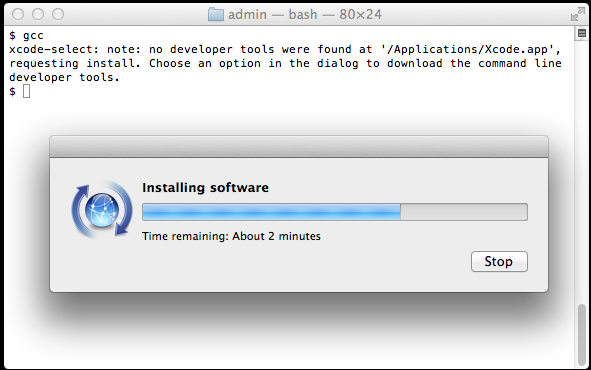

Running a developer command such as 'make' will prompt for you to install the developer tools, if they are missing. To run, this program must be invoked by a service or application that calls for the use of the developer tools. This is done by an application in the Macintosh HD > System > Library > CoreServices folder called "Install Command Line Developer Tools." However, this program cannot be launched independently. The last option is perhaps the easiest, which is to use the system's ability to install the command line tools on demand. dmg disk images and mounted, and you can then run the enclosed installer. Here you can search for "Command Line Tools" to view all versions of the tools from Lion through Mavericks. To do this, you simply need to log into the downloads section of the Apple developer site using an Apple ID. The next option is to download the latest command line tools from Apple's developer page. The command line tools are available as standalone installer packages from the Apple Developer Web site. However, installing this will also include XCode itself, and despite its benefits, some people may not wish to have the entire Xcode suite installed on a system.

The first is to install Apple's XCode developer suite, which is available via the Mac App Store for free. If you need these tools for some reason, then there are three ways you can get them on your Mac. While OS X ships with a number of common commands, by default Apple does not include those that are used for checking out, compiling, and otherwise managing code for developing applications. Part of OS X is its powerful command-line interface, where a competent or even novice programmer can make use of a number of tools for configuring and customizing the system, and make programs and scripts.


 0 kommentar(er)
0 kommentar(er)
